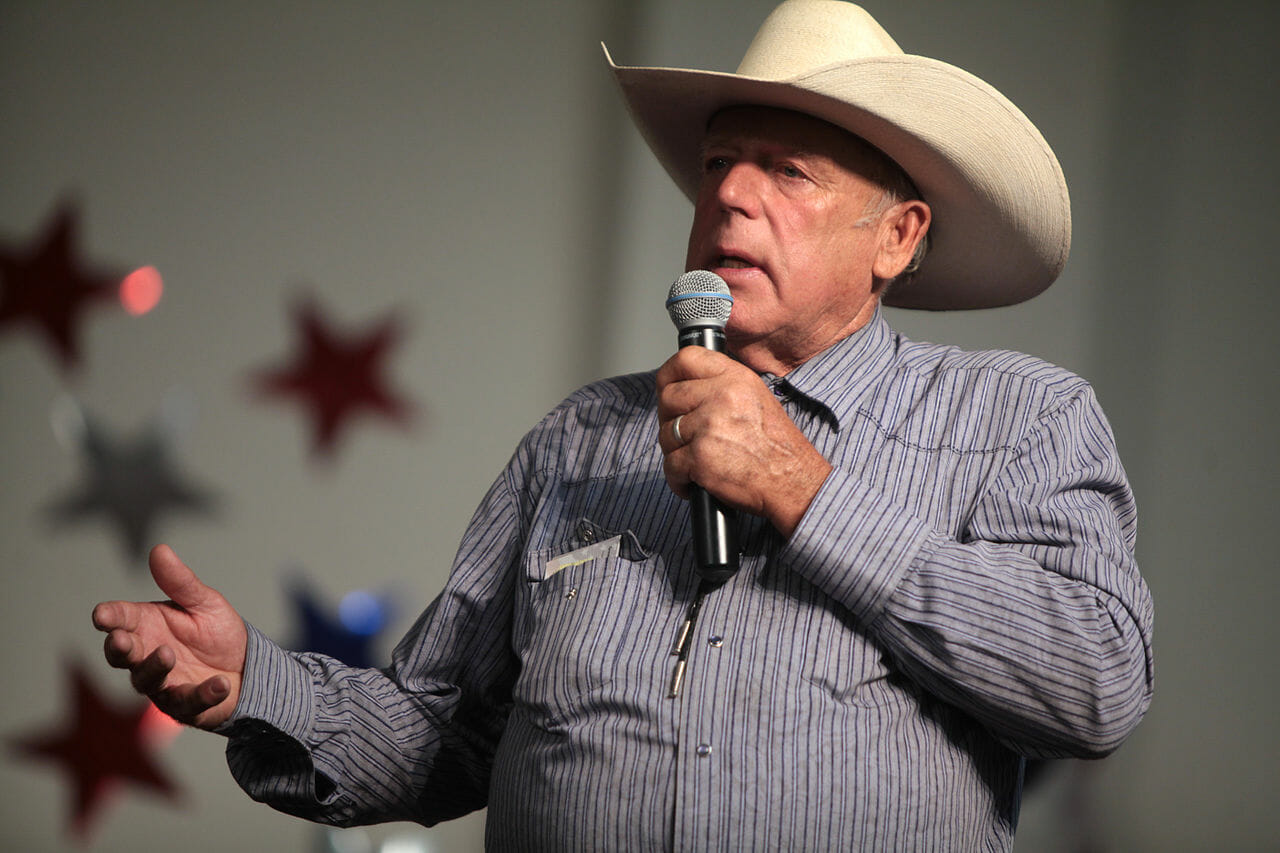Metro comes through once more for federal officers in Bundy ranch standoff

Metro’s finest again provided timely backup for embattled Bureau of Land Management officers.
This time they weren’t outside Bunkerville defending a desert wash packed with rowdy protesters and impounded cattle. They were in U.S. District Judge Gloria Navarro’s courtroom testifying about the tense atmosphere and imminent danger present during an April 12, 2014 standoff between supporters of Bunkerville rancher Cliven Bundy and federal law enforcement trying to protect a BLM roundup.
Although no shots were fired that day, federal officers previously testified that alarming investigative intelligence, combined with the guns present in the agitated crowd and para-military dress of some of the protesters, made them afraid for their safety. Six defendants the government describes as Bundy’s gunmen are on trial accused of threatening and intimidating BLM and U.S. Parks Service law enforcement officers.
In recent weeks, on cross examination,the defense has managed to portray the federal cops as inexperienced wannabes who lacked judgment and overreacted under stress. After the decision was made to discontinue the roundup, some of BLM rangers and Park police initially refused orders to put away their weapons, stand down and pack up. Some of their responses under oath made them appear more fearful than professional.
But the defense this past week had little success with Metro Sgt. Tom Jenkins and none at all with Sheriff Joseph Lombardo.
Jenkins brought more than two decades of law enforcement experience into court. He’s worked many protests, a few of which have turned violent. Attorneys could doubt his memory of the day’s events, but there was no questioning his resume.
Jenkins’ day on April 12 began as a member of an escort unit whose duty was to provide security for Sheriff Doug Gillespie. The sergeant wound up supervising the riot skirmish line police threw out in an effort to keep the protest from degrading into violence.
He noted the weapons present in the crowd, but his concern really grew when they begin being waved around and pointed in the direction of law enforcement. If you want to get a cop’s attention, just wave a gun at him.
“From the time we got there until the time we left,” Jenkins replied when asked how often protesters flashed their handguns and rifles Metro’s way.
And although lengthy recorded exhibits didn’t always concur with the sergeant’s memory of the subject, he was unflappable on the stand under incisive cross examination. When asked to elaborate on those who were doing the pointing, Jenkins reduced his description to “White males, pointing weapons at the convoy.”
And he appeared to set the defense team on its heels when he allowed that not only were his officers concerned for their safety, “They were scared. They were crying.”
He also said the officers wanted to retrieve their semi-automatic rifles from nearby police vehicles and don their flak vests, but were instructed not to by Assistant Sheriff Tom Roberts in an effort to keep from escalating tensions as the crowd grew and got louder. Testimony notwithstanding, video presented during the trial shows most of the protesters were unarmed.
But of course those weren’t the people police were watching.
When Lombardo’s took the stand Thursday, he reminded those who have followed his career that the public needn’t worry about his leadership skills. An assistant sheriff at the time of the standoff, Lombardo accompanied Sheriff Doug Gillespie to Bundy’s makeshift stage outside his ranch in an attempt to cool the heated rhetoric and avoid bloodshed. He stood patiently during Bundy’s windy grandstanding and impossible demands -- disarm all federal law enforcement and bulldoze the entrance booths at the region’s federal conservation and recreation areas -- and then returned to Las Vegas believing the botched cattle roundup was reaching a peaceful resolution.
For the first time jurors saw video of the elder Bundy holding forth with armed, uniformed members of the Arizona State Militia, who call themselves the “Praetorian Guard,” standing guard. Dozens of his hundreds of followers were armed with handguns and rifles.
When Bundy instructed his followers to go get his cattle, Lombardo’s day grew complicated and dangerous. He attempted to negotiate with one of Bundy’s sons, Dave Bundy, in a plea for patience and enough time to allow the BLM to make a safe exit.
It was Lombardo, jurors learned, who essentially put his career on the line to overrule BLM Supervisory Special Agent Dan Love and press for the release of the impounded cattle during the height of the armed standoff’s tensions.
“He advised me they were federal cattle and it was his decision,” Lombardo said.
Fortunately, Lombardo prevailed.
The sheriff estimated it would have taken 500 officers to fully secure the area, and he had just 50. Concerned that even an accidental discharge of a firearm would set off a shootout, Lombardo and his troops worked to de-escalate the scene and back federal law enforcement away from a gate that had become the last point of separation between increasingly agitated protesters and the officials sent to round up and remove Bundy’s trespassing cattle from federal public lands.
A cop since 1988, Lombardo made it clear he feared for the safety of the officers and protesters in the highly charged atmosphere. They don’t call in the SWAT team for traffic tickets.
Led in the courtroom by Assistant U.S. Attorney Steven Myhre, the prosecution appears to be finishing the long process of entering most of the voluminous photographic, video and audio into the record. The foundation of its case appears set.
The testimony of Jenkins and Lombardo was bound to hit home with jurors.
Bring guns to a peaceful protest, and you’re bound to get everyone’s attention.
John L. Smith is a longtime Las Vegas journalist and author. Contact him at [email protected]. On Twitter: @jlnevadasmith.
